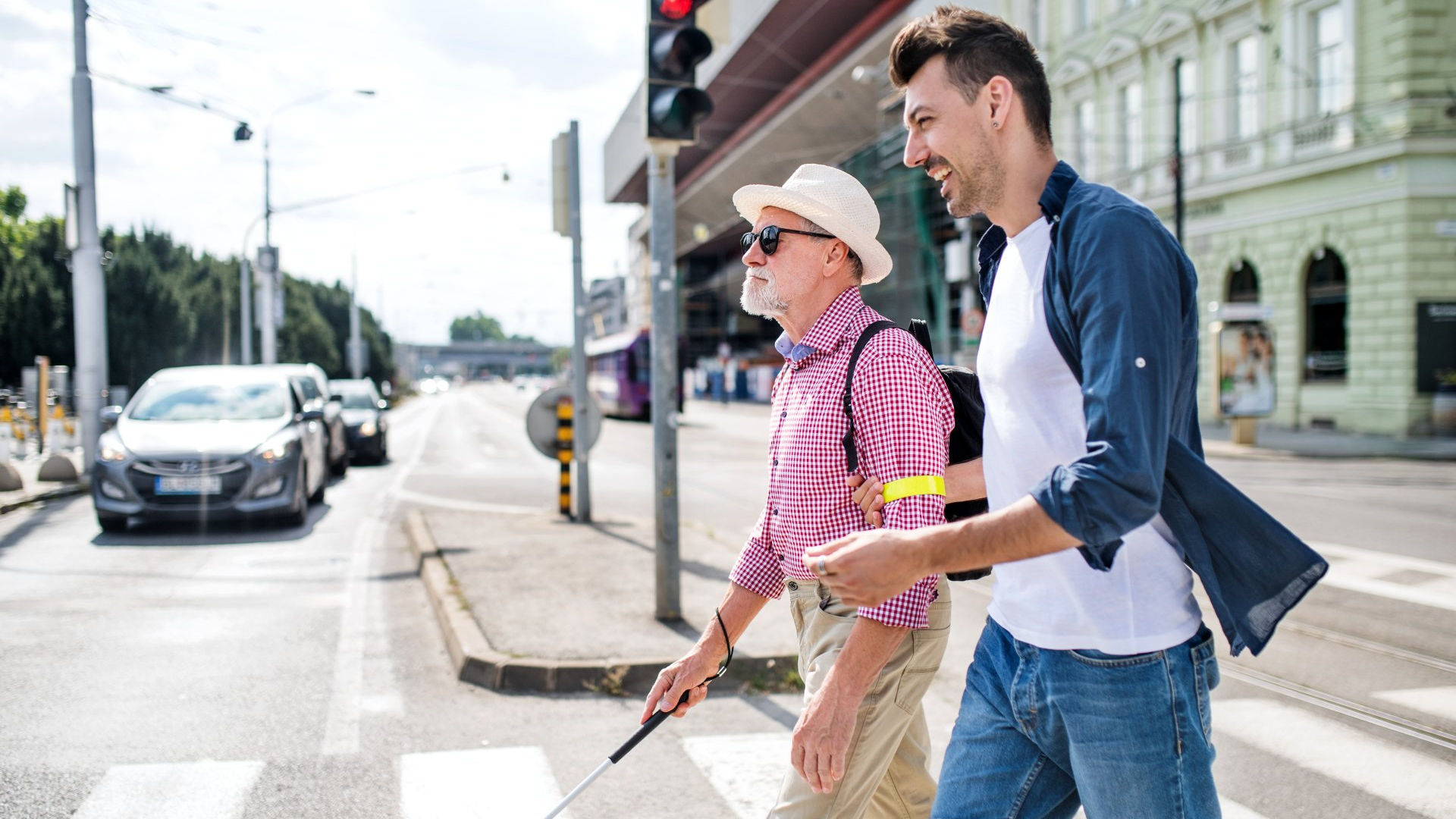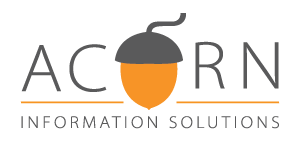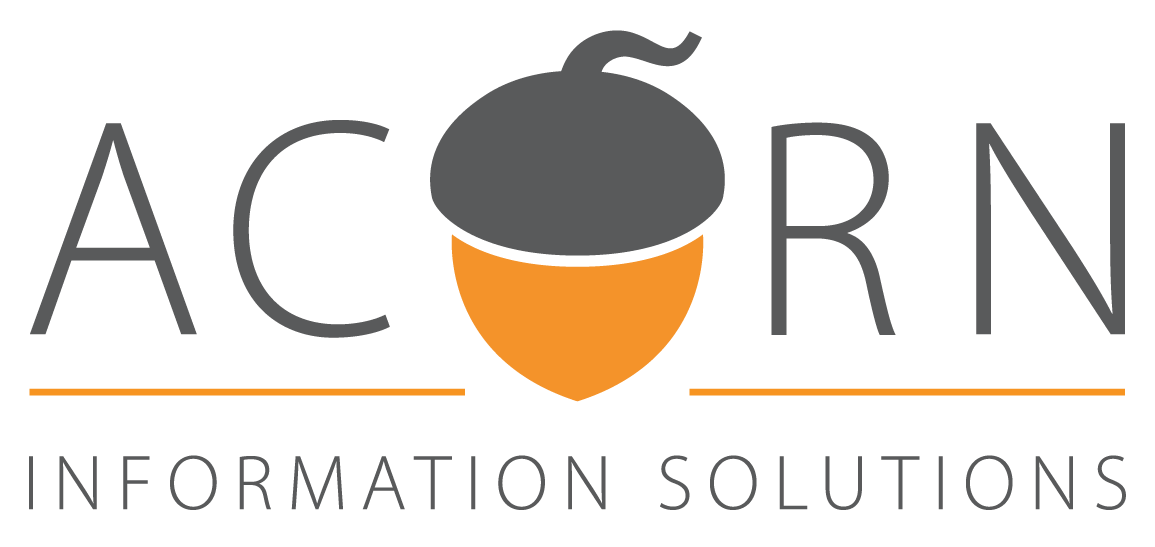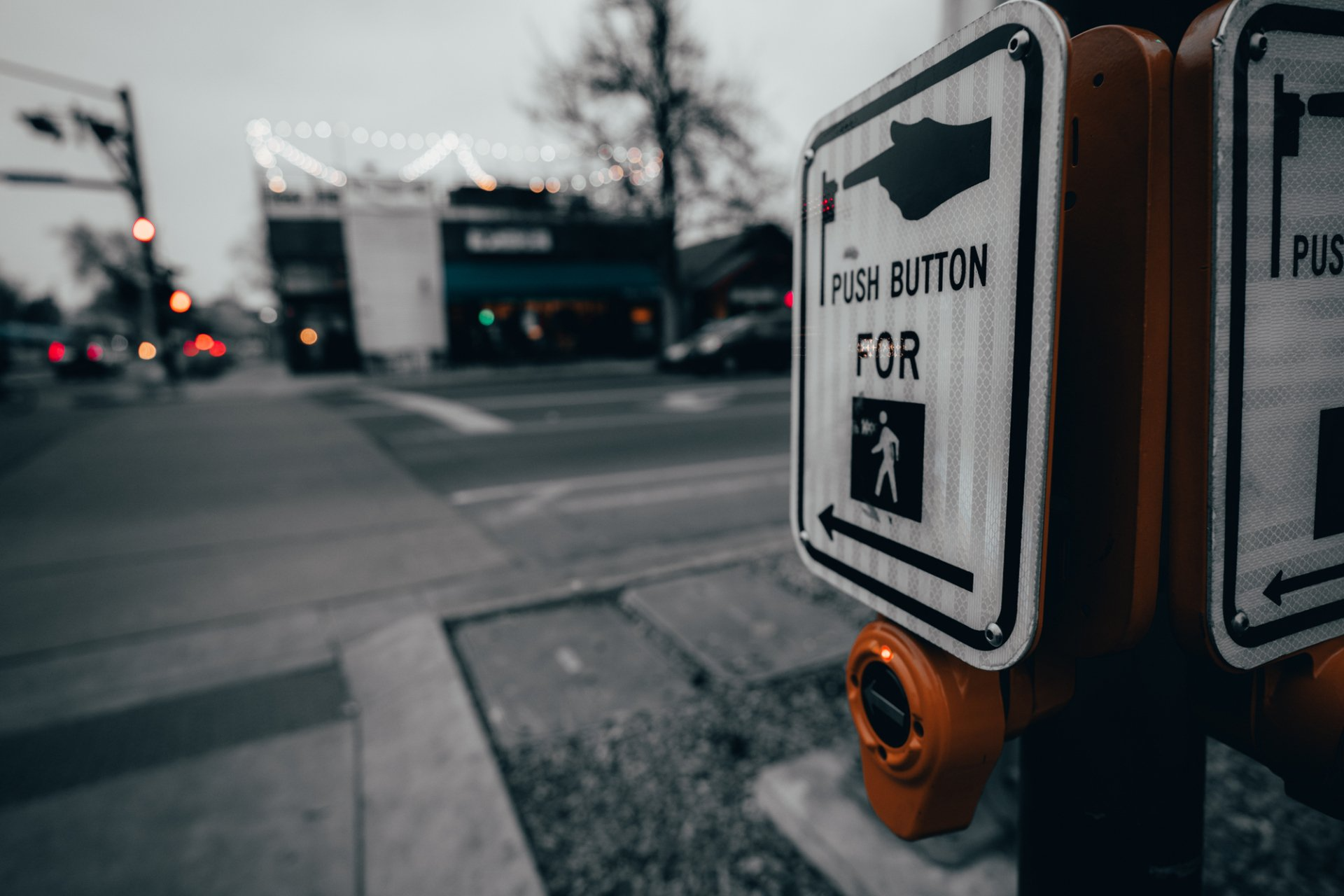Providing Heightened Safety for the Visually Impaired at Lower Costs
An Audible Pedestrian Signal (APS) is a device used to communicate pedestrian timing in a non-visual format such as audible tones or verbal messages. The visually impaired rely on APS technology to navigate their communities and provide increased safety when crossing at intersections.

The Challenge
The City of Sault Ste. Marie and Canadian National Institute for the Blind (CNIB) approached Acorn to determine the best locations for five new APS devices. The City traditionally spreads the installation of municipally-owned equipment equally across its six wards. However, the City and CNIB wanted to develop a more equitable solution for the location of these devices for improved public safety and smart allocation of municipal resources.
The Solution
To determine the best location for APS devices, Acorn performed an impact analysis weighing each intersection based on potential usage and safety impact. The analysis relied on several shared municipal, health, and organization data sets including postal codes of CNIB clients, proximity to bus stops, right hand turning traffic at intersections, commonly used pedestrian routes, street speed, crossing width, number of pedestrian collisions and the locations of facilities commonly visited by CNIB clients based on client survey data.
Most communities determine the need for APS through a suitability checklist or a point scale. This requires manual evaluation which is time-consuming and labour intensive.
By layering this information, Acorn was able to build a suitability grid and weigh each intersection based on these features to determine the most equitable placement of APS in the community.
Benefits
This project illustrates the benefits of shared data and the cooperation between the city, CNIB and health services. With the help of Acorn, the City implemented new APSs and established a valuable service, providing the greatest benefit moving forward for community members with visual impairments. This was accomplished while reducing time and labour costs.
Be sure to take a look at our
Terms of Use and Privacy Policy.
The Sault Ste. Marie Innovation Centre is committed to providing an accessible website. If you have difficulty accessing content, have difficulty viewing a file on the website, or notice any accessibility problems, please contact SSMIC to specify the nature of the accessibility issue and any assistive technology you use.
SSMIC will strive to provide the content you need in the format you require.
SSMIC welcomes your suggestions and comments about improving ongoing efforts to increase the accessibility of this website. Please contact us at
info@acorninfosolutions.ca
Subscribe to The Sault Ste. Marie Innovation Centre Newsletter and get updates from Acorn Information Solutions
Newsletter Sign Up
We will get back to you as soon as possible.
Please try again later.




